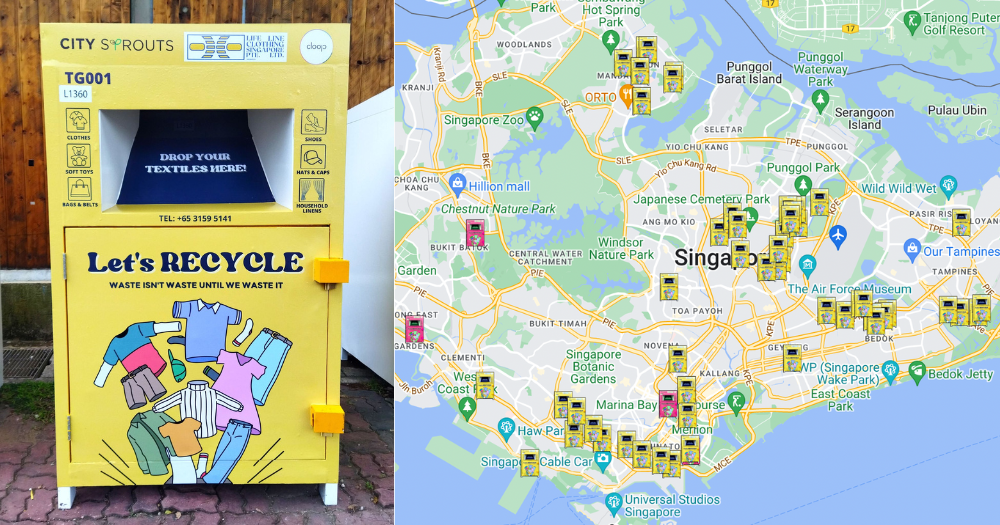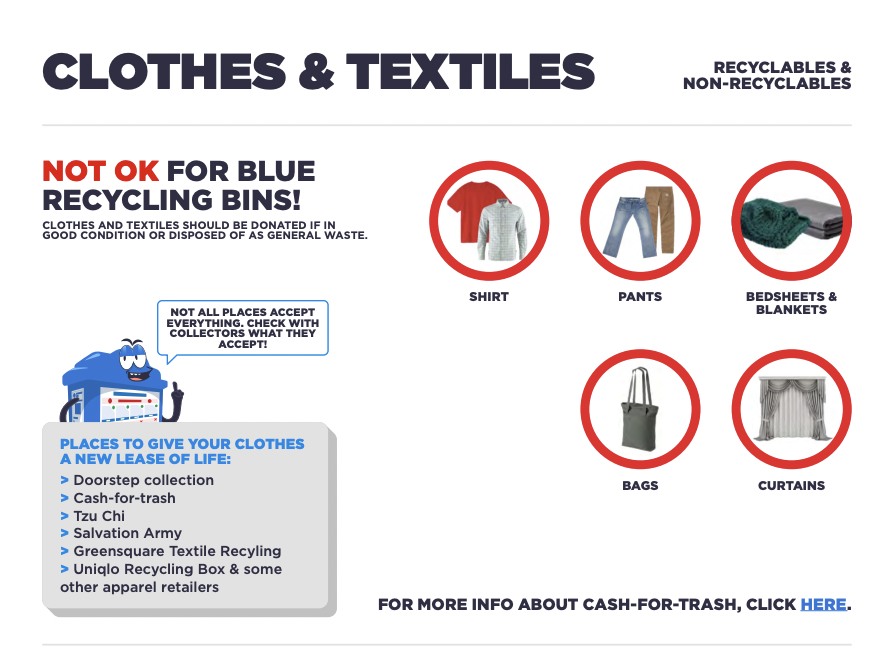Recycle your old clothes, bags & shoes at these 60 textile recycling bins across S'pore

Bukit Merah, Queenstown and Tanjong Pagar residents can now conveniently recycle old clothes with new textile recycling bins in their neighbourhood.
In an update posted to Facebook by Tanjong Pagar GRC Member of Parliament Eric Chua, the textile recycling bins have been deployed at the following seven locations:
- 40 Cambridge Road
- 85 Dawson Road
- 1 Jalan Bukit Merah
- 127 Kim Tian Road
- 35A Margaret Drive
- 75B Redhill Road
- 4 Tanjong Plaza
These six bins are recent additions to an existing network of bins across the country.
Residents can drop off not just clothes into the recycling bins, but also bags, shoes, accessories, belts, hats and caps, plush toys and even pillow linens.
The items can be deposited in any condition, Chua wrote in his post.
How the bins work
The textile recycling bins are set-up by Cloop, a local clothes swap organisation, in partnership with Life Line Clothing, a Malaysian-based textile recycler.
Responding to Mothership's queries, Tan Yin Ling, one of the two co-founders of Cloop, shared that collection from the bins currently takes place twice a week by the recycler.
Tan said that eventually, collection frequency will be adjusted according to the usage levels of the bins.
After collection, the textiles are transported to a facility run by Life Line Clothing located in Kuala Lumpur, Malaysia.
There, the textiles are sorted by hand into around 500 categories and for three broad purposes — reuse, upcycling and recycling.
Those deemed to be in acceptable condition will be put up for sale primarily in Malaysia's second-hand market.
Some are also sent overseas for reuse and resale after stringent sorting and preparation, Tan shared.
Those textiles that are not fit for reuse are upcycled.
For example, they are turned into fabric to be used as wipers for cleaning purposes in industries such as the oil industry, or used as raw materials for household items like gloves, tote bags or floor mats.
Shoes, in particular, are used to create flooring materials for playgrounds.
Finally, items which are not upcycled are burnt together with coal to produce energy, Tan said.
The whole process, Tan emphasised, is intended to be "zero waste".
Why recycle?
Though it may not be apparent, making clothes is a resource-intensive process.
This process is made worse by the rise of fast fashion brands that make a business out of high consumption and fast-changing fashion trends, contributing to waste.
In 2021, out of 189,000 tonnes of textile and leather waste produced, only 7,000 tonnes or four per cent was recycled in Singapore.
Recycling can thus help stretch the lifespan of textiles and reduce wastage.
The conventional recycling bins, Bloobin, deployed by the National Environment Agency, do not accept textiles. Textiles dropped off in the Bloobins are disposed of as general waste.

Cloop's textile recycling bins help close this gap in textile recycling.
The textile recycling bins were first deployed in July 2022.
Since then, Tan told Mothership that around 21.5 tonnes of textiles have been collected and processed.
There are now around 60 Cloop textile recycling bins around the island, in estates such as Yishun, Hougang and Serangoon.
Cloop is aiming for around 200 bins deployed by the end of the year, Tan shared.
To find a Cloop textile recycling bin near you, check out this nifty map.
This article was originally published on Mothership. Its inclusion on this website is solely for education purposes .

No comments
Share your thoughts! Tell us your name and class for a gift (: